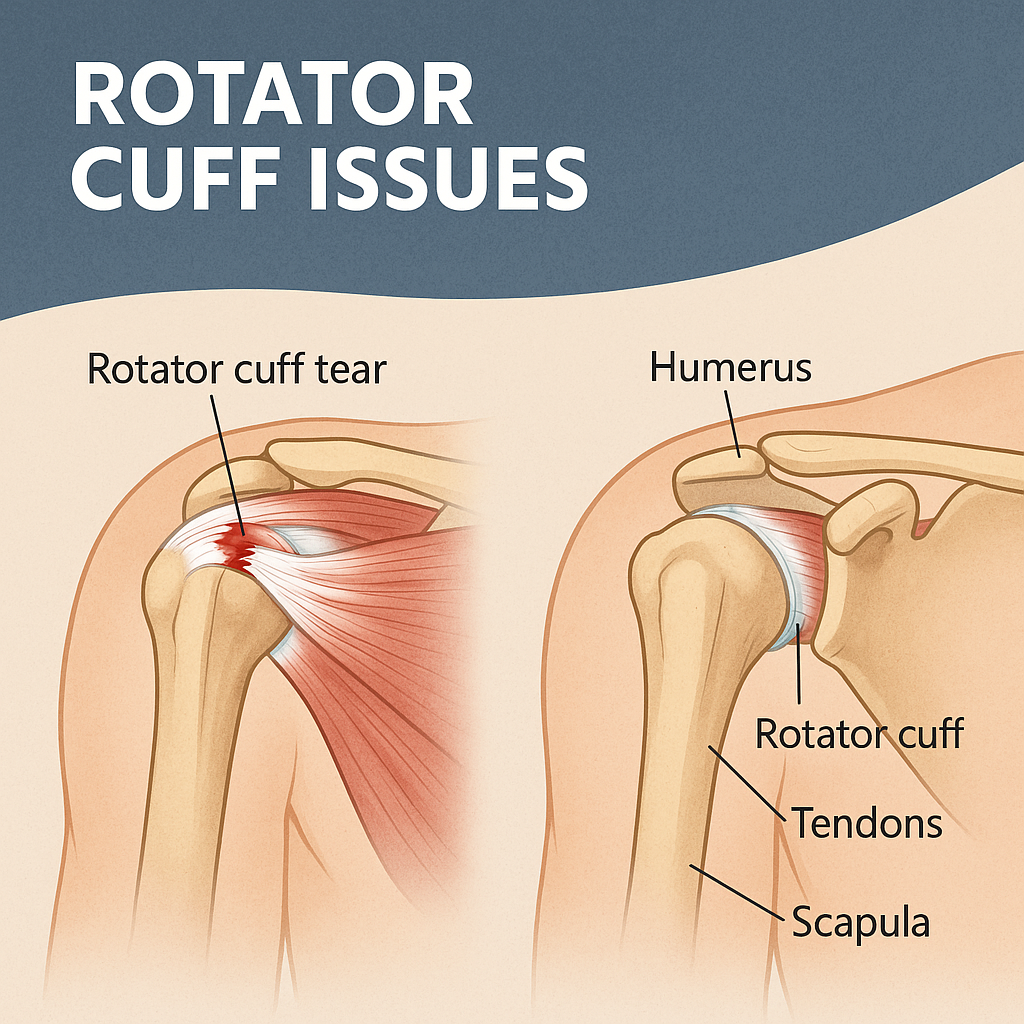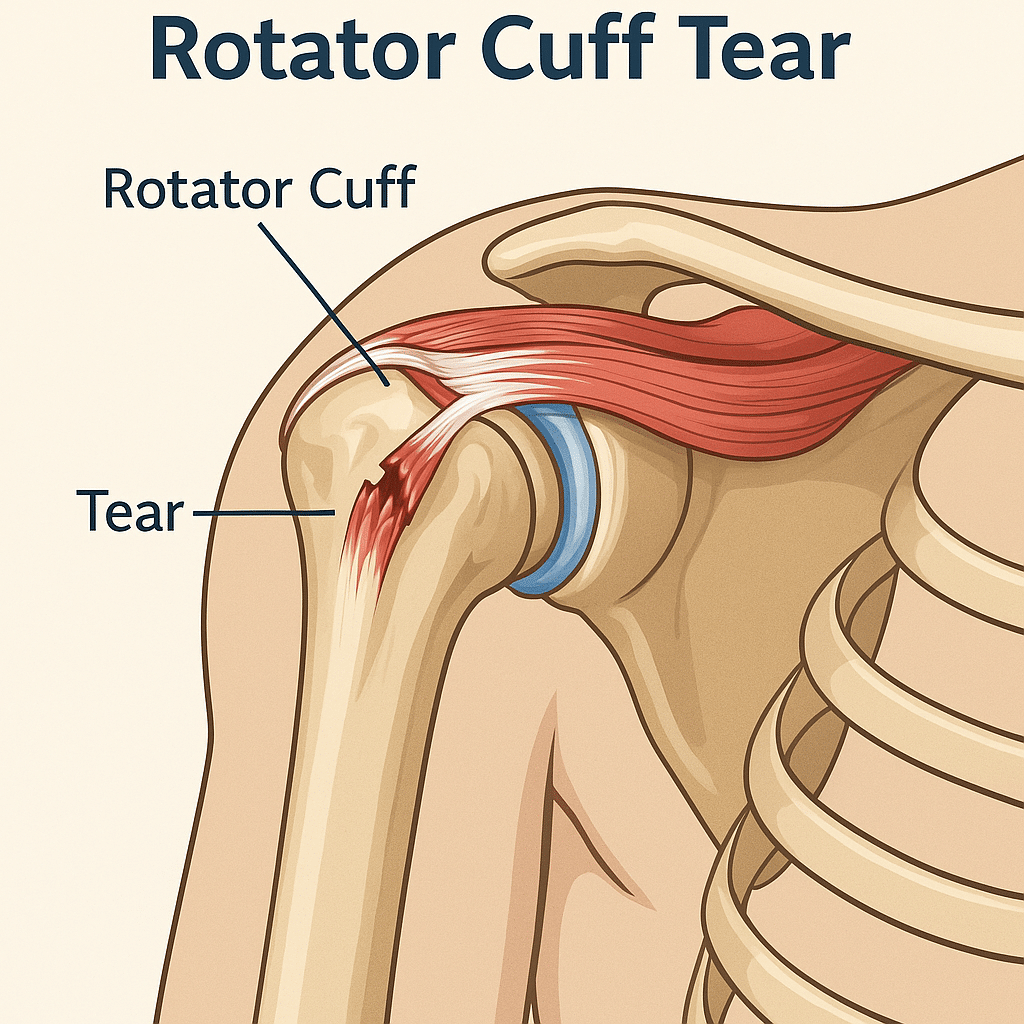

Your shoulder is one of the most flexible joints in your body—and one of the most relied on. That flexibility comes from the rotator cuff, a group of four muscles and tendons that keep the shoulder stable and allow you to lift, reach, and rotate your arm. Over time, or after an injury, these tendons can become irritated, frayed, or torn—making everyday tasks like reaching into a cabinet, brushing your hair, or sleeping on your side painful and frustrating.
Rotator cuff issues can develop gradually from repetitive use (sports or jobs with overhead motion) or occur suddenly after a fall or heavy lift.

Rotator cuff tear symptoms often include:
While some rotator cuff problems improve with rest, physical therapy, and anti-inflammatory care, others involve more significant damage that may require surgery to restore strength and function.
At all of our OrthoNJ divisions, we take a patient-first approach. We evaluate your injury, goals, and lifestyle to choose the best path—never rushing to the operating room.
When surgery is the most effective option, our fellowship-trained, board-certified shoulder specialists use the latest techniques to help you safely return to the activities you love.
OrthoNJ prioritizes patients over profits. Our six divisions collaborate to deliver excellent outcomes. Guided by our belief in the “Power to Put Patients First,” our physicians and partners uphold this commitment in every aspect of care.
Before surgery, you’ll work with your orthopaedic surgeon to confirm the plan and optimize your health.
You’ll likely:
If you smoke or have conditions like diabetes, improving health factors before surgery supports healing.
Most rotator cuff repairs are arthroscopic—using a small camera and miniature instruments through tiny incisions to clean damaged tissue and repair the tendon.
The torn tendon is anchored back to bone using small “suture anchors” (often absorbable or metal). For larger or complex tears, your surgeon may convert to an open repair, perform a superior capsule reconstruction, or add a biceps procedure.
Typical operative time is 1–2 hours. Most patients go home the same day.
Important: Recovery varies by biology, tear size, age, and adherence to physical therapy.
Initial discomfort is expected, but nerve blocks and medications make recovery manageable. Most patients find the first week the toughest, then it steadily improves.
Yes. Without PT, even a well-repaired tendon can stiffen or re-tear. Therapy restores range of motion, strength, and confidence.
While very safe, risks include:
Most people return to near-normal function with less pain than before. Some limitations can persist with very large or chronic tears—your surgeon will set realistic expectations for your case.
Rotator cuff surgery is a structured journey with milestones. At ONJ, we’re focused on getting you back to what you love—supported by world-class orthopaedic specialists.